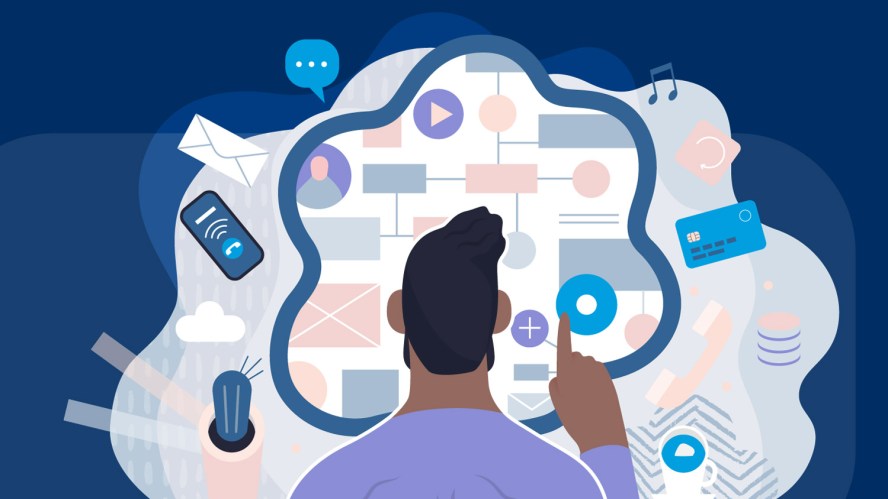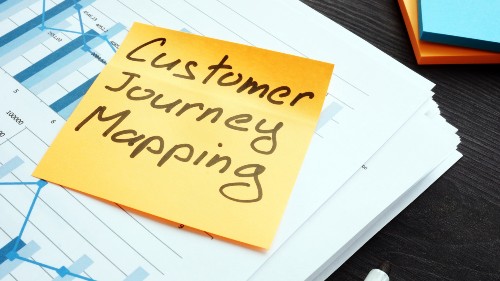How Macquarie Bank and Lendlease Link Employee and Customer Experience


Customer expectations are changing, and in a digital-first world you need to stand out to stay ahead. Learn why Macquarie Bank and Lendlease think employee and customer experience are linked, and how trust is key to success in both.
Salesforce Staff
Customer engagement and experience leaders from some of Australia and New Zealand’s biggest brands agree: trust is the fundamental link between employee and customer experiences. And in a constantly changing economic environment, businesses need to work out how they can best meet changing customer expectations.
For Rosalind Coffey, Head of Culture & Client Experience and Head of People at Macquarie Bank, it all comes down to one thing — trust.
“If you want customers to be loyal and to become advocates for you, you first need to earn their trust,” says Rosalind.
Crucial in this pursuit, agreed Natalie Slessor, Head of Customer + Product Futures at property giant Lendlease, is the need to balance employee culture with positive customer experiences, while also ensuring an ethical lens is applied to all of your business decisions.
5 ways the banking industry can improve the customer experience



Listen and learn, act and measure: putting the customer at the centre
Eighty-eight percent of customers believe trust becomes more important in times of change. To earn that trust, you first need to understand what your customers want. And that is no easy feat in a post-COVID world where customer expectations have changed dramatically.
The first step, says Rosalind, is to listen carefully.
“We’ve expanded our system to make sure that we are getting feedback at all the listening posts that we have around Macquarie Bank,” Rosalind explains. “The contact centre, complaints team, social media — everywhere.”
“We are then pairing all of those things with a good client relationship management program and working towards having a single digestible source of data where all of our teams can go to understand the existing client experience.”
Listening carefully to your clients also means making sure that you are learning from them by asking the right questions.
“You really need to think deeply about the question that you’re asking and the problem you are trying to solve,” says Rosalind. “We learn from our clients, we act and then we measure whether it had an impact.”
Seeing customer experiences through an ethical lens
Data, engagement scores and other metrics are all useful tools to measure the customer experience. But Lendlease has taken things a step further and used their customer feedback to create a way of measuring the impact of place-making.
“One of the facts that has come out of our data is that, in a post-COVID environment, customers’ expectations have gone way higher,” says Natalie. “So we developed something called the Eudemonic index — it means conducive to happiness.”
“We ask people what they felt was important in a particular place and then we know when we’re getting it right and whether we are activating and creating places of work and play that feel safe, sustainable, engaging and inspiring.”
Analysing and learning from customer information is integral for businesses that want to build trust, but too much data can have the opposite effect.
Video: Customer Data Platform explained in 60 seconds



In the digital age where clients are increasingly concerned about the ethics of how their data is used, companies are noticing a big shift in thinking. Instead of asking ‘can we use customer data this way?’, businesses are now focused on ‘should we be using customer data this way?’ Customers have said the same — in the State of the Connected Customer report, ‘communicating honestly and transparently’ and ‘using customer information responsibly’ were listed as the top two actions that companies can take to build trust.
Framing every decision through the lens of trust is Rosalind’s top tip for customer experience leaders who are trying to navigate the new digital-first world.
“Trust is going to be at the forefront of people’s minds,” says Rosalind. “Can I trust you with my information? Can I trust you to do the right thing by me? Can I trust that when you tell me something I can believe it, I can rely on it and that it’s in my best interests?”
“I think that’s the single piece of advice I can give, that if you can view decisions through the lens of ‘does this build trust?’, then you will have a very good foundation for customer success.”
Happy employees equals happy customers
The issue of trust is not just a question for executives — businesses are also finding answers within their workplaces.
Businesses are increasingly seeing interconnectivity between their customer and employee experiences, which led Macquarie Bank to combine the two functions internally.
Great customer experience starts with great employee experience



“We deliberately paired client experience with people and culture within our organisation, because all of the research tells us that more engaged employees will deliver better experiences to clients,” Rosalind says. “We saw our engagement scores and retention rates increasing in a positive way.”
“The next cab off the rank for us is to start to map the data that will link positive or negative client experiences and try to link that back to individual employees or teams to understand what’s happening there in terms of driving better engagement.
“If we can continue to support our employees and build that client-centric culture, we can then create a cycle of employee experience leading to better client experience and those clients in turn becoming loyal advocates for Macquarie business.”
Learn more about customer expectations and what you can do to build trust.



This article was updated in August 2022

















